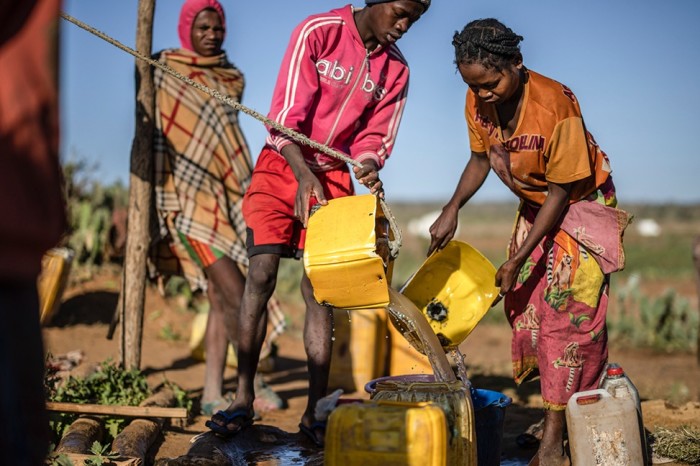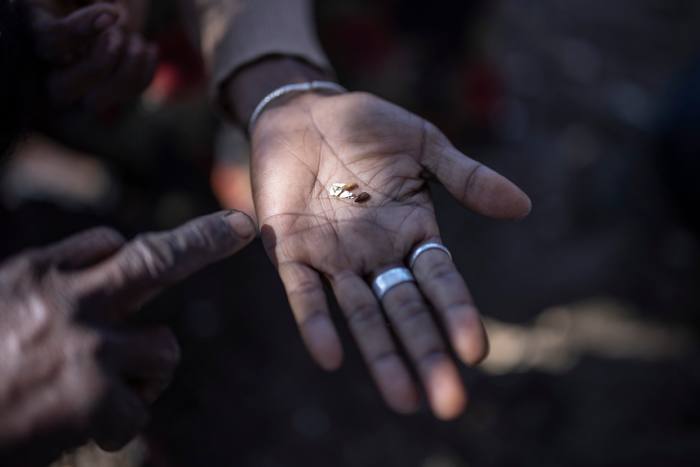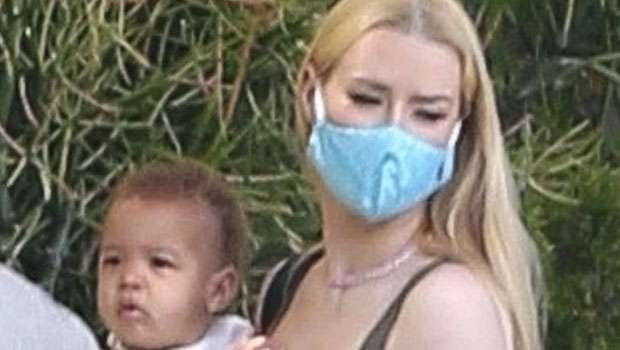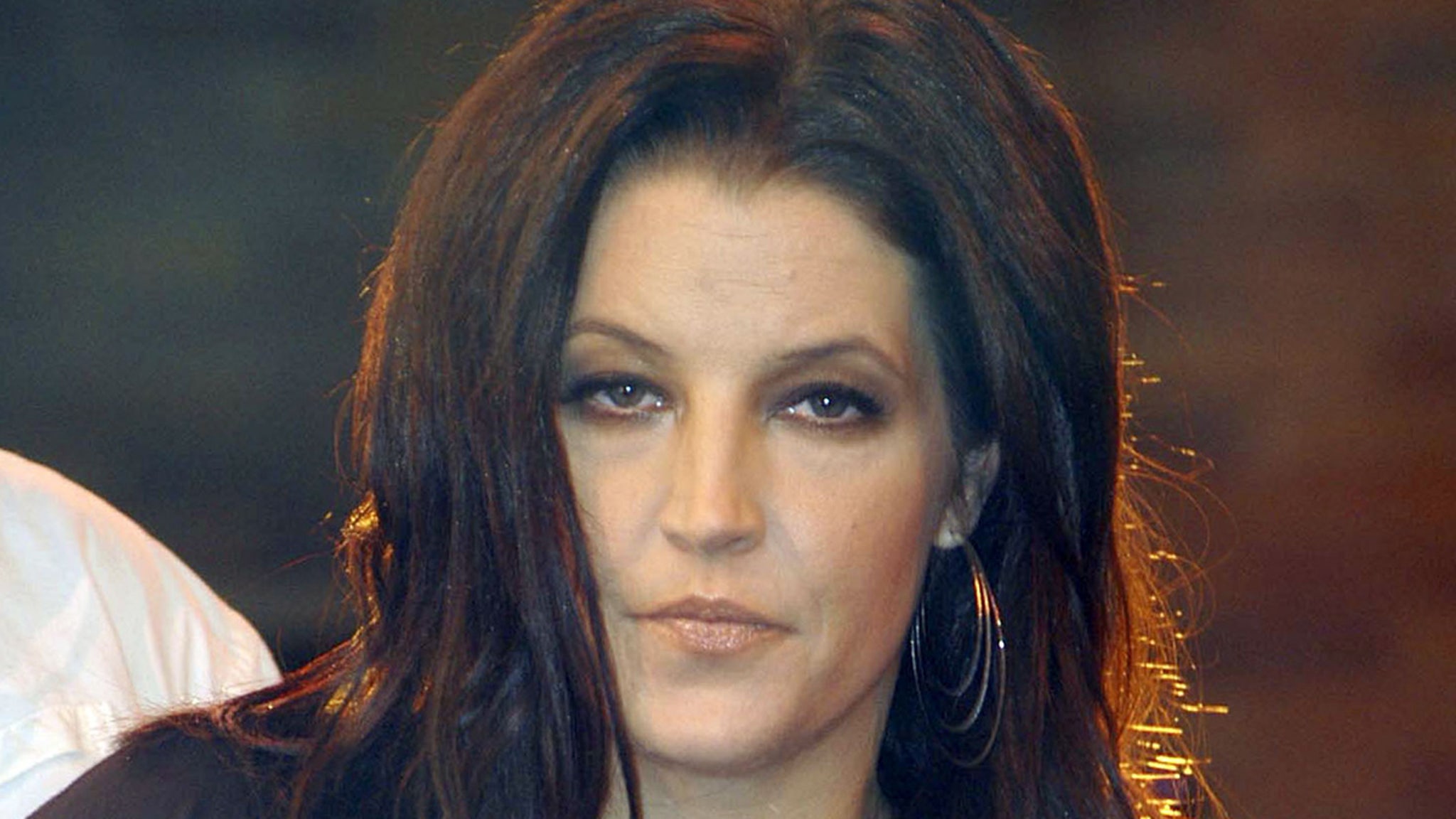The UN has called it the world’s first climate-change-induced famine. Madagascar’s government agrees it is a result of the west’s carbon-fuelled lifestyle. A number of scientists and experts disagree, saying it is actually a consequence of poverty and poor governance.
For the people of southern Madagascar, unaware of the international furore, it is known simply as the kere — the hunger.
Soanavorie Tognemare, a resourceful 22-year-old who lives with her husband and two toddlers in a village near Ambovombe, did everything she could to keep her children alive. “I fed cactus fruit and wild leaves to my children,” she says, holding her two-year-old daughter, Haova, who was at one point diagnosed as being severely malnourished. “We boiled the leaves and added salt. It had no taste but it filled our stomachs,” she says. “Kere means hunger. No food every day. That’s kere.”
Rain has barely fallen for three years in southern Madagascar, a semi-barren region in a California-sized island nation off the east coast of Africa that is more often associated with tropical forests, baobab trees and lemurs than with starvation.
But in the south, more than 1,000km from the capital Antananarivo, or three lurching days on a dirt track that passes for a highway, even in the best of times people eke out the meagrest of existences. In a part of the country where mobile phones and motorbikes are rare and where only the better-off travel in two-wheeled carts pulled by long-horned cattle, the lack of rain has tipped hundreds of thousands into extreme hunger.
Some 1.68mn people, or a third of the population of the Grand Sud, remain in “crisis” or “humanitarian emergency”, according to the Integrated Food Security Phase Classification, a standard five-point scale of escalating hunger. In a cactus-filled landscape where people wear wide-brimmed cowboy-style hats and have a proud history of resisting central authority, many were reduced to eating plants and leaves normally fed to cattle.
Marcelline Voatsasinanjara, who grew up locally and who now works for Save the Children, describes the physical effects of extreme hunger. “You can’t move,” she says. “Only the eyes show you are alive.”
The government accepts that many people are hungry but it is wary of the term “famine”, with its implication of state failure. Still, one local official says he knows for certain that on one day alone, 26 people died of hunger.
“They had nothing to eat so they ate cactus leaves or they found leaves on the ground,” says Lalaina Rakotondramanana, the prefect of Ambovombe, capital of one of the three administrative regions that make up the Grand Sud.
Children staggered into town to beg for food, he says. Adults sold their few possessions, including pots and pans, to purchase cassava or rice or to buy water, a commodity so precious that one resident compared it to liquid gold. Like people fleeing America’s dust bowl in the 1930s, some people packed up entirely and headed elsewhere. A few were even filmed boiling and eating their leather sandals, though Rakotondramanana insists this was a hoax.

The slow motion tragedy touches on several issues that go well beyond Madagascar’s particular circumstances. As in many countries, years of neglect by a centralised government have left marginalised communities vulnerable to sudden shocks, whether from the climate or from events like the food-inflationary war in Ukraine. The intervention of aid agencies has highlighted their role in pulling desperate people back from the brink, yet they have a much patchier record in preventing people from falling into crisis in the first place.
More fundamentally still, Madagascar’s humanitarian crisis raises the question of man-made environmental destruction, whether at a global or a local level. As the people of the Grand Sud struggle to scratch out a living from depleted soil, they offer a warning to other countries, and arguably the planet itself, about what happens when humans push nature too far.
As Jared Diamond, the geographer, wrote in his book Collapse, entire societies, such as that of Easter Island, the once-flourishing Pacific island, can suddenly spiral downwards towards self-destruction. Just as one Easter Islander presumably chopped down the last of the trees on which the island’s survival depended, some scientists say, so the people of Madagascar, where deforestation has also been rife, are in danger of wrecking the very landscape they need to survive.
As people in rich and poor countries alike exploit the environment for its resources and use it as a carbon sink and rubbish tip, what is happening in southern Madagascar could be a harbinger for communities everywhere. Many scientists believe it is only a matter of time before people in many parts of the world find themselves living in places that simply cannot sustain life as they have known it.
“It’s hard to live here. There’s not enough rain so we can’t grow food,” says Patricia Vola, a community organiser in the Grand Sud.

Tracing the causes
Madagascar’s famine has become a lightning rod for arguments about climate change, in particular whether global heating has contributed to the island’s crisis. It was David Beasley, a former Republican governor of South Carolina and now executive director of the UN’s World Food Programme, who first made the connection. “There have been back-to-back droughts in Madagascar which have pushed communities right to the very edge of starvation,” he said after a visit last June. “This is not because of war or conflict, this is because of climate change.”
Madagascar’s own government picked up the claim. At the COP26 UN climate change conference in Glasgow last November, Baomiavotse Vahinala Raharinirina, then environment minister, excoriated the west for failing to take seriously the links between its own actions and the plight of poor people. Why did Europeans continue to criss-cross their continent on cheap flights, she asked? Even delegates at a climate change conference ate outside warmed by gas heaters.
Nor had rich countries, she said, honoured their pledge, first made in 2009, to muster $100bn annually to help poor countries with climate mitigation and adaptation. With its share of that money, Madagascar could have constructed a pipeline to bring water into its parched southern region, she said.
Amid soaring temperatures in the UK, warnings of a “heat apocalypse” in France and devastating forest fires from Australia to the US, it might seem obvious that Madagascar’s prolonged drought is the result of global climate change. Several regions of Africa, from the Sahel to the Horn, where hunger is also prevalent, have been adversely affected by unpredictable and devastating weather patterns.
However, a report last December by World Weather Attribution, a respected research collective, found that in Madagascar’s case “natural climate variability” rather than “human-caused climate change” was the main weather-related cause of what would normally be a once-in-135-year event. (Such an event has now occurred twice in 30 years.) Moreover, it said, “food insecurity in Madagascar is not just driven by meteorological drought, but also a host of factors such as demographics, poverty, infrastructure, policy and non-climate shocks”.
That report was seized on by some critics as evidence that both the UN and Madagascar’s government had milked the climate-change angle as a fundraising ploy. One charity that works in southern Madagascar concedes that contributions shot up after articles began to appear linking the famine with global warming.
Emre Seri, a Madagascar-based journalist writing for French magazine Revue XXI, called the claim “one of the most successful media stunts of recent years”. Instead of climate change, he blamed the failure of government policies, cattle-rustling and other local factors in a country that is poorer now than at independence in 1960.

Government neglect has undoubtedly played a role. In the south of Madagascar, provision of everything from schools to roads is inadequate to non-existent. “The south has been forgotten for a long time,” says Rakotondramanana, the prefect of Ambovombe.
Politicians in Antananarivo have been promising to fix the main road for decades, something he thinks may now actually happen, at least on one section, after a recent presidential visit. As things stand, cars and trucks can get stuck for days or even weeks, raising the cost of goods and making it difficult to transport farm surpluses – where there are any – to the cities.
Even more urgent, say local officials, is to bring water to the region, either by piping it in or by tapping the reserves that lie deep underground.
“Rural Madagascar has gone backwards economically in the last few decades,” says Paul Wilkin, an expert on Madagascar at the Royal Botanical Gardens, Kew. “The drought is not primarily caused by climate change, but by poverty. ”
Policy failures aside, some scientists have a different explanation for the drought. Patricia Wright, an expert on Madagascar’s environment at Stony Brook University in New York, argues that unsustainable human practices have pushed the country towards the brink of catastrophe. “Madagascar is in a dangerous downward spiral,” she says. “People get poorer every year. And with climate change breathing down their throat, it makes it worse, accelerating everything.”

Chopping down trees for charcoal
Human settlement on Madagascar, which according to some estimates broke off from the continental landmass more than 80mn years ago, is relatively recent. Ten thousand years ago some Africans found their way across the Mozambique Channel to the island, 400km off the coast, but it was people from Indonesia who colonised the island en masse, probably about 2,500 years ago. The closest language to Malagasy, Madagascar’s national language, is spoken in the interior of Borneo, some 10,000km away.
The new settlers found a heavily forested island — quite how forested is disputed — whose flora and fauna was 90 per cent endemic. For much of the island’s megafauna, the arrival of people spelt extinction. Scientists estimate that some 17 species of giant lemur, a type of mammal only found on Madagascar, two species of hippo, two species of giant tortoise and four species of elephant bird were wiped out, either hunted for meat or deprived of their habitat by slash-and-burn agriculture.
The introduction of cattle, so venerated in the south that their horns adorn owners’ graves, created need for pasture.
Wright at Stony Brook argues that recent human activity has been more destructive still. Poverty has pushed people into increasingly unsustainable practices, she says, including chopping down trees for the charcoal that people in the cities use to cook. The country’s population has grown sixfold from 5mn at independence to almost 30mn today, adding to land pressure, she says. “Where does this end? It ends in disaster, doesn’t it?”
Alison Richard, a senior research scientist at Yale, pushes back against what she calls the “Paradise Lost” version of Madagascar’s environmental history, one that she says was characterised by constant flux well before the arrival of humans. Author of a recent book, The Sloth Lemur’s Song: Madagascar from the Deep Past to the Uncertain Present, Richard says that much of the island was covered in wild grasses, not forests, and that soil in the south has probably always been poor and droughts frequent.
Satellite imagery, she concedes, shows that some 40 per cent of forest cover has vanished in the past 50 years, swallowed up for farmland, forestry, mining and charcoal. Though there have been attempts to blame Malagasys for everything, she says, there are plenty of other culprits.
France, which colonised the island in 1896, accelerated environmental destruction by expropriating the best farmland, forcing rice farmers up the slopes on to unsustainable land. In the south, much land clearance came after 1990, she says, the unintended consequence of a well-meaning EU policy to promote commercial agriculture.
“There are many hands on the axe,” she says.
Richard argues that, with more political will, environmental destruction can be reversed and people’s lives improved. She advocates the planting of native trees. Farmers could grow valuable cash crops like vanilla, of which Madagascar supplies 80 per cent of the world’s needs, and green peppercorn. “It’s not the fact of human presence. It’s what you do,” she says. “That to me is a seed of hope. Otherwise, it’s a kind of: ‘We’re doomed. It’s in our DNA to destroy ourselves.’”
In the village of Somontsala, a three-hour drive from Ambovombe, Letoto Manantsoa, an elder, accepts the link between deforestation and drought. “As Malagasy people, we think maybe it’s because we cut the trees,” he says. “That’s why there’s no more rain.”
Wilkin at Kew agrees there could be a connection between local deforestation and changing rain patterns. The same could also be true for fearsome dust storms, known as tiomena, or “red winds” that destroy seedlings and make life unbearable. “The tiomena comes from the east, bringing red sand,” says Fenosoa, a villager who goes by one name. “All the leaves and everything else in the village turn red. Even the cows turn red.”

Rakotondramanana, the prefect, says: “The sandstorms are a result of deforestation. There are not enough trees to maintain the land.”
As the soil degrades, it becomes yet harder to grow crops, forcing people to seek other income. One man agrees to show his illegal charcoal operation using wood harvested from trees several hours’ walk from the road. A large sack goes for 10,000 ariary, or about $2. “I can’t give my name. I’m scared of going to jail,” he says.
A smattering of rain earlier this year, combined with a big international aid effort — catalysed partly by the famine’s alleged association with global climate change — has eased the situation somewhat, though many people remain desperate. The IPC says that the likelihood of poor harvests of maize, cassava and sweet potato, the region’s staples, mean that tens of thousands could slip back into extreme hunger. After three years of drought, it will take more than a few days of rain to restore equilibrium, aid workers say.
In Somontsala, villagers say that monthly cash payments from Save the Children have staved off starvation. But the last of six instalments was paid in July.
Asked what they will eat now, Mary Blandine breaks open a tiny nut and displays the seeds on the palm of her hand. “This,” she says.



























































![Mason Ramsey – Twang [Official Music Video] Mason Ramsey – Twang [Official Music Video]](https://i.ytimg.com/vi/xwe8F_AhLY0/maxresdefault.jpg)




















